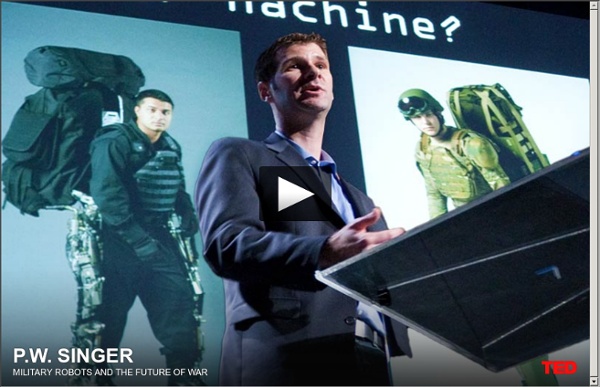PW Singer on military robots and the future of war

US Army unveils 1.8 gigapixel camera helicopter drone
29 December 2011Last updated at 13:11 ET The drone aircraft can hover and do not need a runway to be able to take-off or land New helicopter-style drones with 1.8 gigapixel colour cameras are being developed by the US Army. The army said the technology promised "an unprecedented capability to track and monitor activity on the ground". A statement added that three of the sensor-equipped drones were due to go into service in Afghanistan in either May or June. Boeing built the first drones, but other firms can bid to manufacture others. "These aircraft will deploy for up to one full year as a way to harness lessons learned and funnel them into a program of record," said Lieutenant Colonel Matthew Munster, product manager at the US Army's Unmanned Aerial System Modernization unit. Big eyes The A160 Hummingbird systems are capable of vertical take-off, meaning access to a runway is not necessary. The technology is based on a 1.8 gigapixel camera - the largest video sensor used in tactical missions.
Related:
Related:



